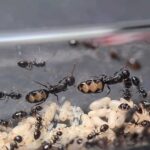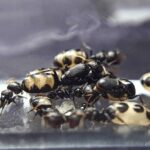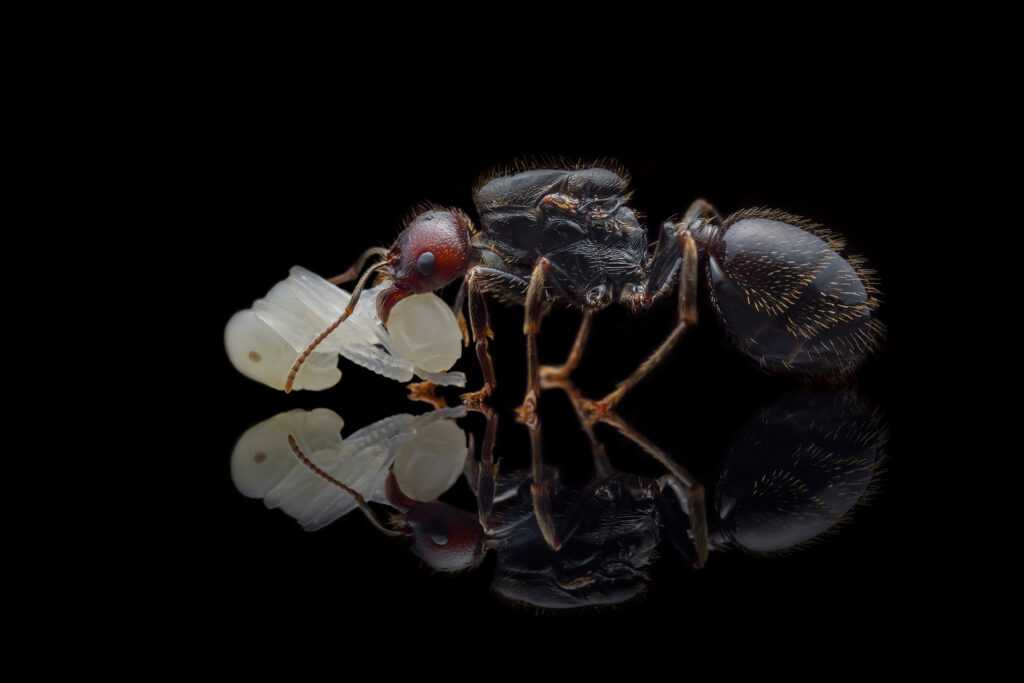Camponotus bellus: The Peaceful Ant Colony
Camponotus bellus is a fascinating species of ant known for its peaceful nature and visually stunning appearance. In this updated description, we will explore the various aspects of this species, including colony type, size, nutrition, habitat requirements, and more. Whether you are a seasoned ant enthusiast or a beginner, this comprehensive guide will provide you with all the information you need to know about Camponotus bellus.
Colony Type and Size
Camponotus bellus exhibits a polygynous colony type, meaning they can have multiple queens coexisting in a single colony. This unique social structure allows for increased productivity and colony growth. With a colony size of up to 10,000 workers, Camponotus bellus colonies are known for their impressive numbers and efficiency. The workers are generally smaller, measuring around 3-5 mm in length, while the queens range between 5-8 mm. The major workers, also known as Majors, stand out with their larger size, measuring between 4-7 mm.
Appearance
Camponotus bellus ants have a striking appearance that sets them apart from other ant species. They are predominantly black, with a distinctive yellow pattern on their abdomen. This yellow patterning adds a touch of elegance to their overall appearance and makes them visually captivating.
Nutrition
When it comes to feeding Camponotus bellus, a varied diet is essential for their overall health and well-being. They primarily feed on food insects such as cockroaches and crickets. Additionally, they can also be fed with syrup made from a mixture of water and honey, with a ratio of 4 parts water to 1 part honey. Fruits, vegetables, jelly, and cooked chicken without salt are also suitable food options for these ants. Providing a diverse range of food ensures they receive all the necessary nutrients to thrive.
Habitat Requirements
Creating the ideal habitat for Camponotus bellus is crucial for their optimal development and growth. Maintaining the right levels of humidity and temperature is essential to sustain a healthy colony.
Arena Humidity
Camponotus bellus thrives in an arena with a humidity level ranging between 30-50%. It is important to monitor and adjust the humidity level accordingly to prevent any issues related to excessive moisture or dryness.
Nest Humidity
The nests of Camponotus bellus should have a humidity level between 60-80%. Maintaining proper humidity within the nest ensures the ants can create a suitable environment for their brood and increases the overall success rate of colony development.
Arena Temperature
For optimal activity and growth, Camponotus bellus prefers an arena temperature ranging between 23-28 °C. Care should be taken to avoid exposing them to extreme temperature fluctuations, as it can negatively impact their health and development.
Nest Temperature
The temperature within the nests of Camponotus bellus should be kept between 20-24 °C. This temperature range mimics their natural habitat and allows the ants to thrive in a comfortable and sustainable environment.
Features of the Species
Camponotus bellus is well-known for its peaceful nature and peaceful behavior. They rarely show aggression towards other ants or species, making them ideal for ant keepers who prefer a harmonious and low-maintenance colony. Additionally, the noticeable caste differences within the colony, particularly among the Major workers, add to the overall intrigue and beauty of this species.
Recommended Nests for Breeding
When it comes to breeding Camponotus bellus, several nest options are suitable for their needs. Acrylic, cork, plaster, and aerated concrete nests are commonly recommended choices. These nest materials provide the necessary structure, insulation, and humidity control required for successful colony development and growth.
In Conclusion
Camponotus bellus is an impressive species of ant that offers both aesthetic appeal and ease of care. Whether you are an experienced ant keeper or a beginner, providing the right conditions, habitat, and nutrition will ensure the successful development and growth of this peaceful ant species. With their peaceful demeanor, striking appearance, and efficient colony structure, Camponotus bellus is a wonderful addition to any ant enthusiast’s collection.






















Reviews
There are no reviews yet.